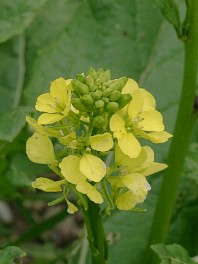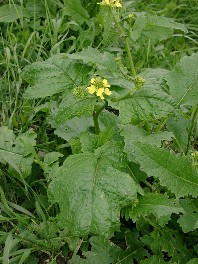 The Wild Mustard is a wild kind of mustard.
Where it grows, the farmers think of it as a nasty weed.
Its rough hairs distinguish it from other plants of the mustard family with yellow flowers.
The Wild Mustard is a wild kind of mustard.
Where it grows, the farmers think of it as a nasty weed.
Its rough hairs distinguish it from other plants of the mustard family with yellow flowers.
The seeds of the Wild Mustard can be used like the seed of cultivated Mustard. You can use it as a spice.
With pulverized seeds you can make a poultice to tease the skin. This is strengthening the blood circulation.
Wild Mustard is also used as the Bach Flower Remedy Mustard.
Medicinal Uses
- Loss of appetite
- Digestive weakness
- Metabolism strengthening
- Rheumatic pain
Information
| Used Parts: | Seed |
| Time to collect: | May until Early Autumn |
Methods
 Wild Mustard can be used in the kitchen and as a poultice to stimulate the blood circulation.
Wild Mustard can be used in the kitchen and as a poultice to stimulate the blood circulation.
Kitchen
In the kitchen you can use the young leaves of the Wild Mustard in salads and vegetables.The seeds can be used as a spice and to grow sprouts.
Eating Wild Mustard is stimulating the appetite and the digestion.
The metabolism is invigorated.
External use
The seeds of the Wild Mustard can be pulverized and mixed with water as a mash.With this mash you can make a poultice to irritate the skin stimulate the blood stimulation.
This can help against rheumatic pain and neuralgic pain.
Plant description
 Wild Mustard is at home in Europe.
Wild Mustard is at home in Europe.
You can find it in gardens, beside roads and on fields.
Wild Mustard can grow up to 60 cm high.
It is an annual plant.
The leaves are lobed, hairy and rough.
From may to august the flowers are blossoming. They are yellow and small with four petals.
The seeds are ripening in late summer.
